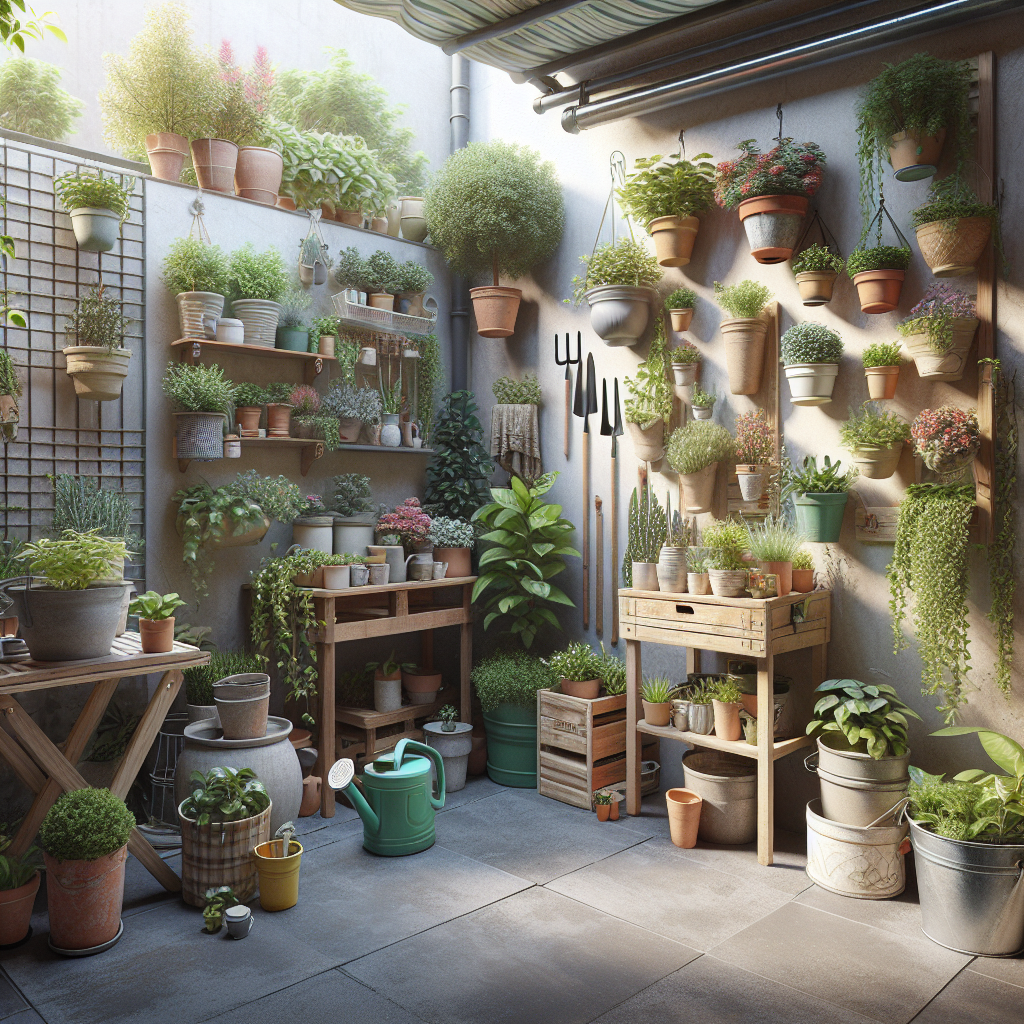In today’s world, many people are living in small spaces like apartments or condominiums with limited outdoor space. However, this doesn’t mean that you can’t enjoy gardening and grow your own plants. Container gardening is a great way to maximize small spaces and bring some greenery into your home.
Container gardening allows you to plant flowers, herbs, vegetables, and even trees in containers like pots, baskets, or troughs. It is a versatile and flexible way to garden as you can move your plants around easily to ensure they get enough sunlight or shade.
One of the key advantages of container gardening is that it allows you to control the soil quality and drainage of your plants. You can choose the right soil mix for each plant type and make sure that excess water drains well from the containers. This ensures that your plants receive the nutrients they need and are not overwatered which can cause root rot.
When starting a container garden, it’s important to choose the right containers for your plants. Make sure that the containers have drainage holes at the bottom to allow excess water to escape. You can use a variety of materials like plastic, ceramic, or terracotta pots depending on your preferences and style.
It’s also essential to consider the size of your containers based on the plants you want to grow. Some plants like tomatoes or pepper require larger pots with more space for their root system to grow properly. On the other hand, herbs like mint or basil can thrive in smaller pots.
Another important aspect of container gardening is choosing the right plants for your space. Consider factors like sunlight exposure, temperature, and humidity levels when selecting your plants. Some popular choices for container gardening include herbs like rosemary, thyme, and parsley; flowers like petunias or marigolds; vegetables like cherry tomatoes or lettuce; and even dwarf fruit trees like citrus or apple.
When setting up your container garden, make sure to place them in areas where they receive enough sunlight throughout the day. Most plants require at least 6-8 hours of direct sunlight daily to grow well. If you have limited sunlight exposure in your home, consider using artificial grow lights to supplement natural light.
Watering is another crucial aspect of container gardening as pots tend to dry out faster compared to traditional gardens. Check your plants regularly for signs of wilting or dry soil and water them accordingly. Avoid overwatering as it can lead to root rot and fungal diseases.
To keep your container garden healthy and thriving, it’s essential to fertilize regularly especially during the growing season (spring through fall). Use a balanced fertilizer suitable for container plants every 2-4 weeks or as recommended by the plant’s care instructions.
Pest control is also important in container gardening as pests like aphids or spider mites can attack your plants indoors. Regularly inspect your plants for any signs of pests or diseases and treat them promptly using organic insecticides or fungicides if needed.
In conclusion, maximizing small spaces with container gardening is a great way to bring nature indoors and enjoy fresh herbs, flowers, vegetables right at home. With proper planning, selection of suitable containers, choosing the right plants, placement in well-lit areas along with regular watering & feeding – anyone can create a beautiful thriving garden in their small space! So why wait? Start creating your own mini oasis today!













